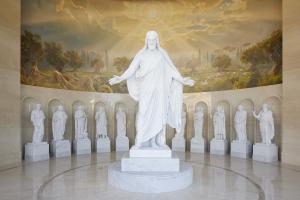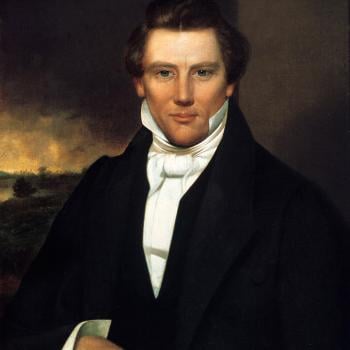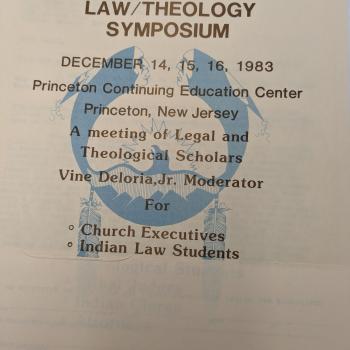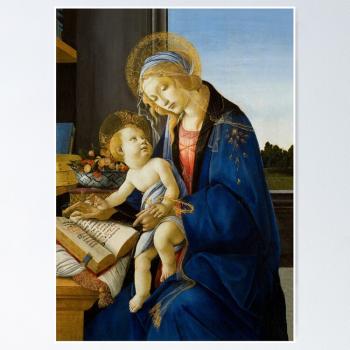When I teach my survey of what my university clumsily terms “Religions of the West,” students learn about categories such as revelation, scripture, ritual, and patterns of authority. The course focuses on Judaism, Christianity, and Islam. Along the way, we discuss several expressions of these traditions over time and place, and at the end of the semester, I typically spend one or two days and introduce a brief unit on Mormonism.

I do so for several reasons. For starters, I do not have any particular scholarly expertise on the subject matter of the rest of the course. By contrast, I have spent a decade reading and writing about the Latter-day Saints. So this gives me a chance to sound at least semi-informed for a bit at the end of the semester right before students evaluate the course and my teaching. Also, I can use Latter-day Saint scriptures and rituals as a way to reinforce and think through concepts introduced earlier in the course.
Most students enjoy this final unit of the semester, though occasionally someone wonders why we’re spending time on this instead of having done a fuller discussion of Shi’ism (see previous paragraph). It never ceases to amaze me that a few students, respectful of other traditions for the whole semester, respond to Mormonism with unusual skepticism and sometimes biting humor. That gives me a chance to talk about the difference it makes for a tradition to emerge in nineteenth-century and have an abundant record in contemporary documents.
I can also count on several students to ask me whether or not Mormonism is Christian. Typically, these students have at least heard of Mormons. They might have heard about Mormons and polygamy, or they might know about the apparent antipathy toward Starbucks, or they might have heard that Mormons “do not believe in the Trinity.” In these instances, I ask students to define Christianity. Unless they chose to do so in Trinitarian ways that exclude the Latter-day Saints and several other groups, very few offer a definition that would not include Mormonism. This gives me a chance to talk about the fact that since the end of Christendom, the diversity of Christian expression has become even more pronounced. Of course, I do not suggest that there is a single way to define Christianity. If students have more narrow definitions of Christianity than I do, they are welcome to them.
Many textbooks and instructors use Mormonism as an example of a new religious tradition and a chance to take a close look at a religious tradition as it comes into being. This reflects what has been in many respects the most significant work of scholarship in what became the subfield of Mormon Studies: Jan Shipps’s Mormonism: A New Religious Tradition (1985). Shipps is a remarkably careful and erudite scholar, and her Mormonism centers on the nineteenth century rather than more recent developments. Still, with the family rather than the individual as its “unit of salvation,” with a goal of eternal progression toward godhood rather than eternity in the presence of God, and with distinctive scriptures, rituals, and its own history of persecution, she argues that “Mormonism differs from traditional Christianity in much the same fashion that traditional Christianity, in its ultimate emphasis on the individual, came to differ from Judaism.” This is a rather striking conclusion. Mormonism is to Christianity what Christianity is to Judaism.
Shipps did not make the argument that Mormons aren’t Christian. In Mormonism and in many other writings, she discusses what I refer to as the christocentric turn within the church over the past century (and that has become more pronounced recently). The implication of her argument, however, is that Mormonism is its own thing, as much as Judaism or Christianity are their own things.
In the decades since the publication of Shipps’s book, Mormon studies has become a subfield of study within the larger academic world of Religious Studies. There are several chairs of Mormon studies and also positions with that emphasis at other institutions. There are Mormon Studies conferences and a Mormon Studies Review. There are field-specific and field-shaping books, such as the essays in Patrick Mason’s Directions for Mormon Studies in the Twenty-first Century.
Scholars participate in this field in a number of ways. Many, perhaps most, are historians of the United States and write histories of Mormonism and its intersection with other elements of American religion, culture, and politics. Others use comparative approaches to the study of religion, or employ the theoretical frameworks of Religious Studies to better understand elements of Latter-day Saint religious culture. Still more have applied new literary approaches to the Book of Mormon and, less frequently, other Latter-day Saint scriptures. I’m not giving examples, because there are so many good ones of each sort that I don’t want to leave people out! Suffice it to say, there has been a tremendous amount of excellent scholarship on various aspects of Mormonism over the past several decades.
The good news for scholars just starting out is that the field remains white unto harvest. While the nineteenth-history of Mormonism will always attract scholars for good reason (see the massive and groundbreaking Joseph Smith Papers project if you are not familiar), historians are also finding ways to write about the transitional period of the turn-of-the-twentieth century and more recent developments as well. Many scholars will find international Mormonism an attractive subject for study in the years ahead. Given the centrality of textual study within other branches of Religious Studies, the field of Mormon studies needs a critical mass of scholars from a variety of perspectives to take Mormon scriptures as their object of study.
There isn’t one best approach, but one of my hopes is that more scholars will reflect on the place of Mormonism within the longer and broader story of Christianity. Many scholars have already done this. In very different ways, books by Terryl Givens and David Holland spring to mind, and that’s what I tried to do with my Mormon Jesus. I think there’s room for more scholarship along these lines. Many historians have done such a marvelous job of placing Mormonism within its nineteenth-century American context that it obscures the extent to which Mormonism fits into a much broader tapestry of Christian thought and reflection.
It’s certainly fine to reflect on Mormonism as its own sui generis tradition, but at the same time, Mormon Studies might realize its greatest potential if it also makes meaningful contributions to the study of Christianity more broadly.












